RARE! WWII 1943 New Guinea Campaign 8th Photo Reconnaissance Squadron (5th Air Force) Heavily Used Nuzen, Nanda, Blucher Point, Kanom Combat Aerial Photo Map*


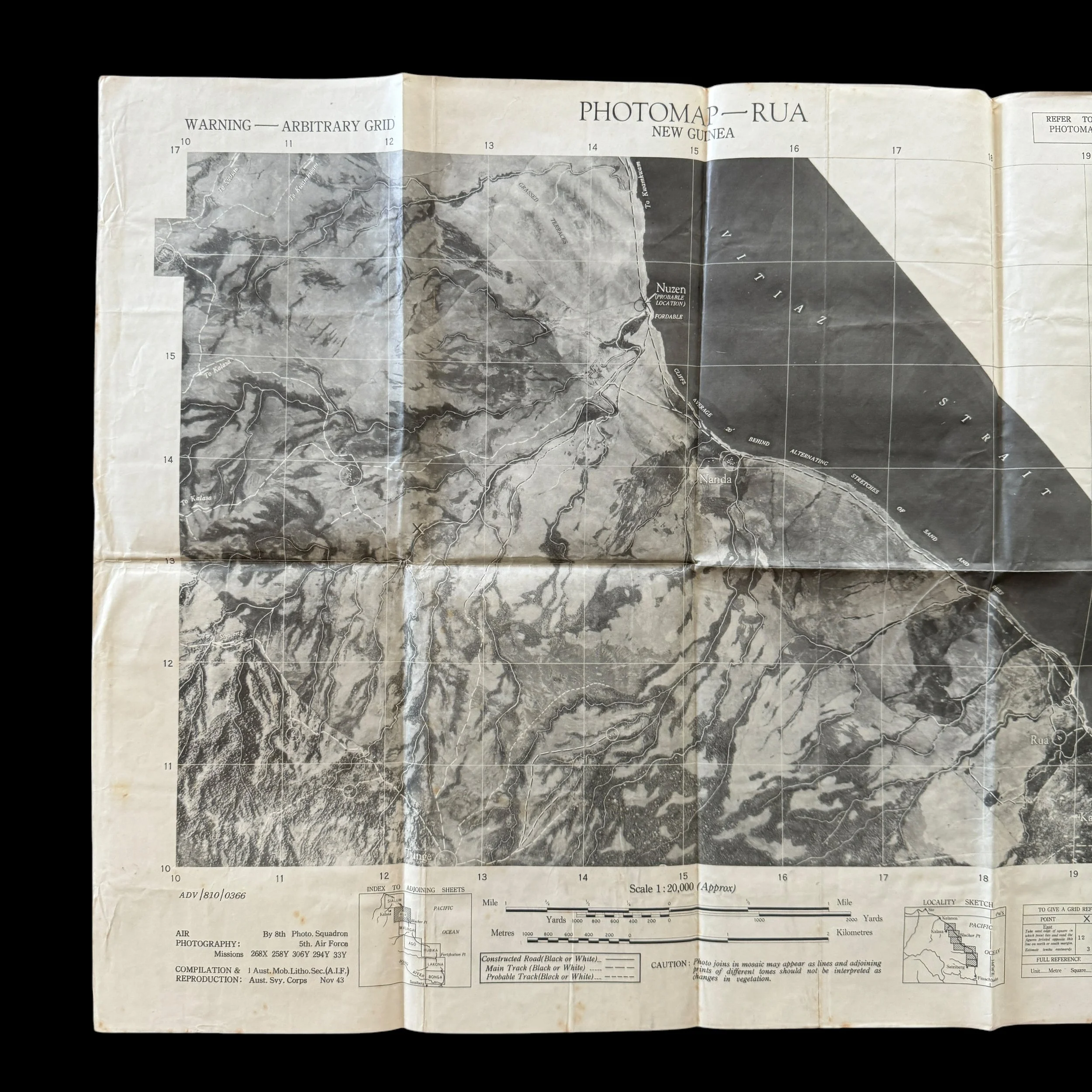
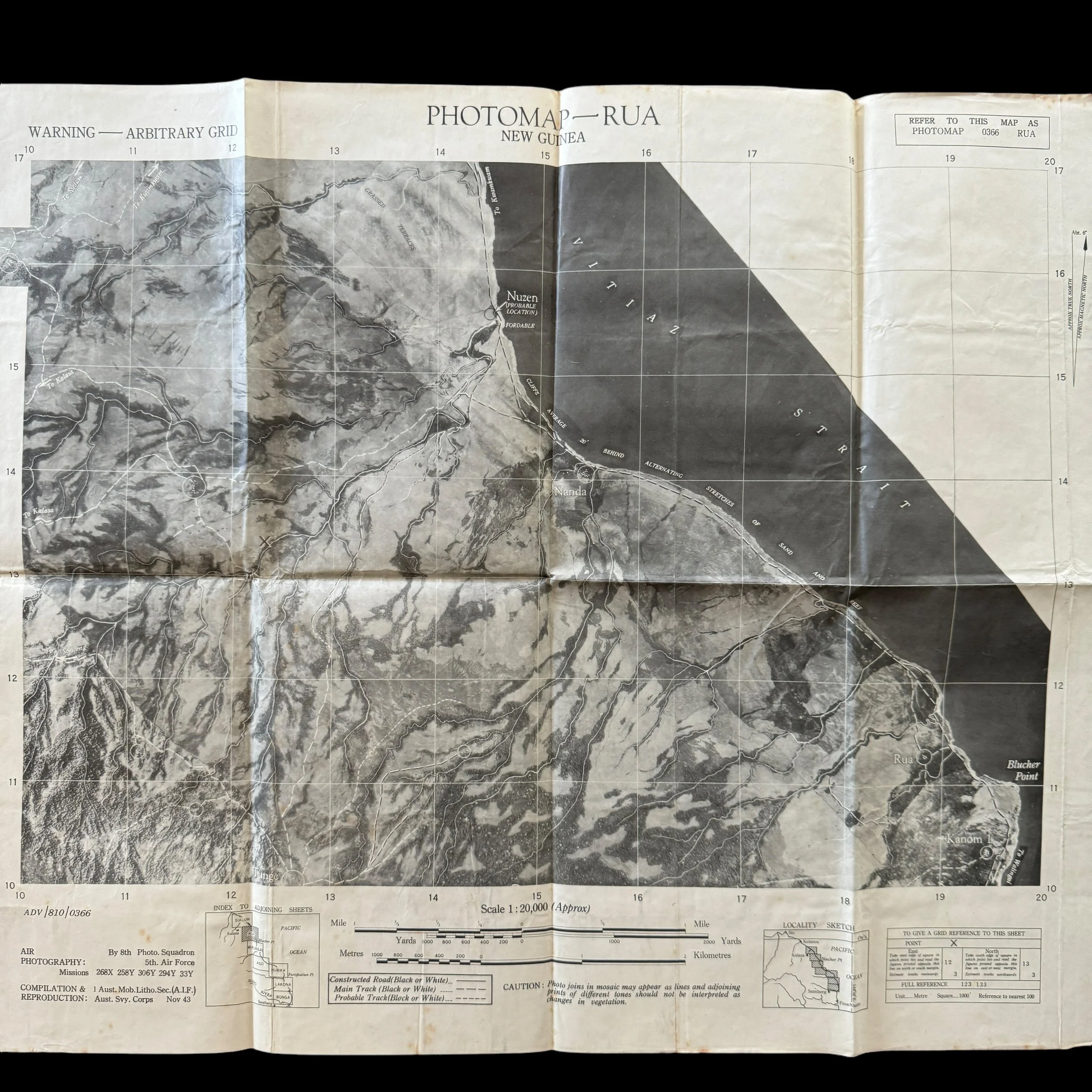

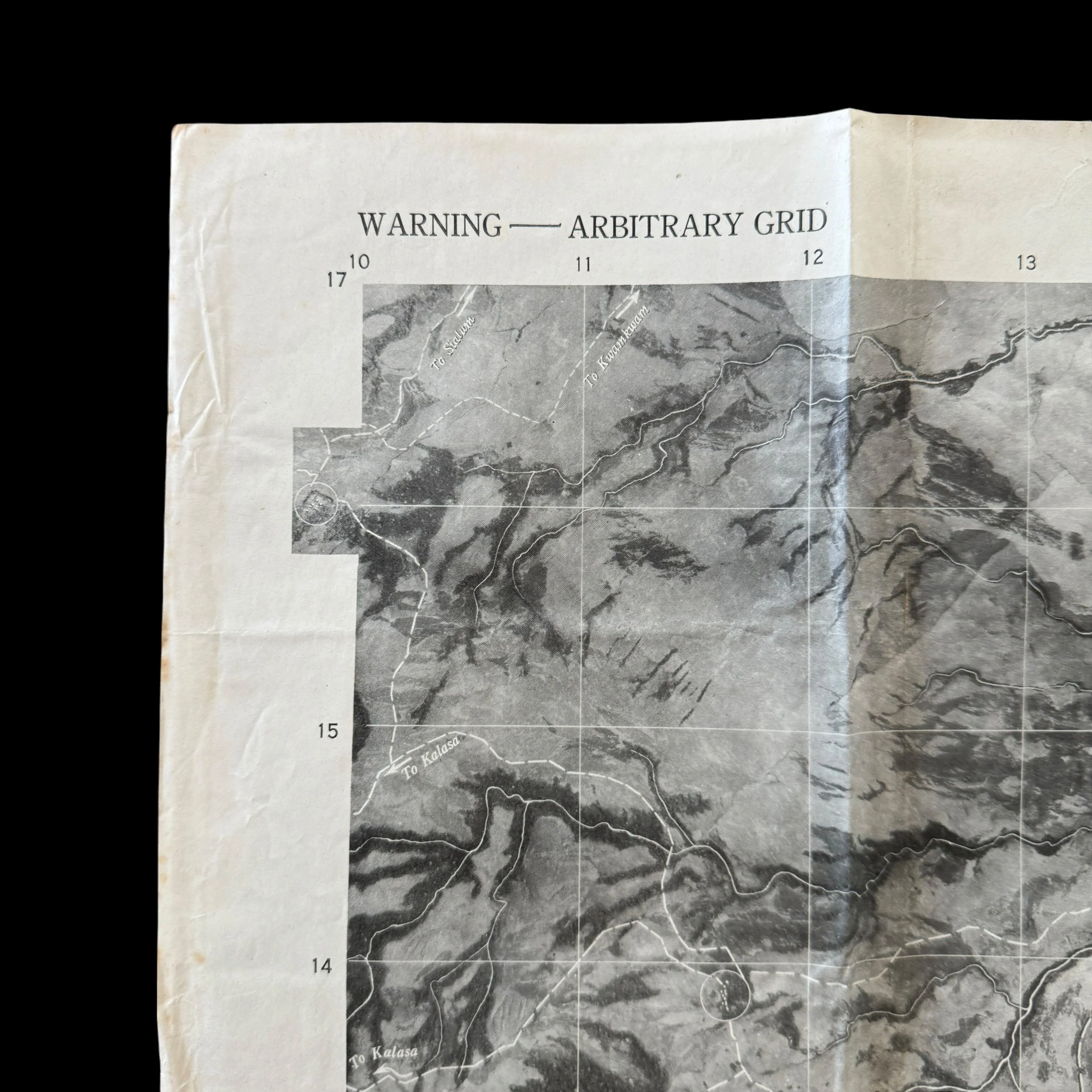
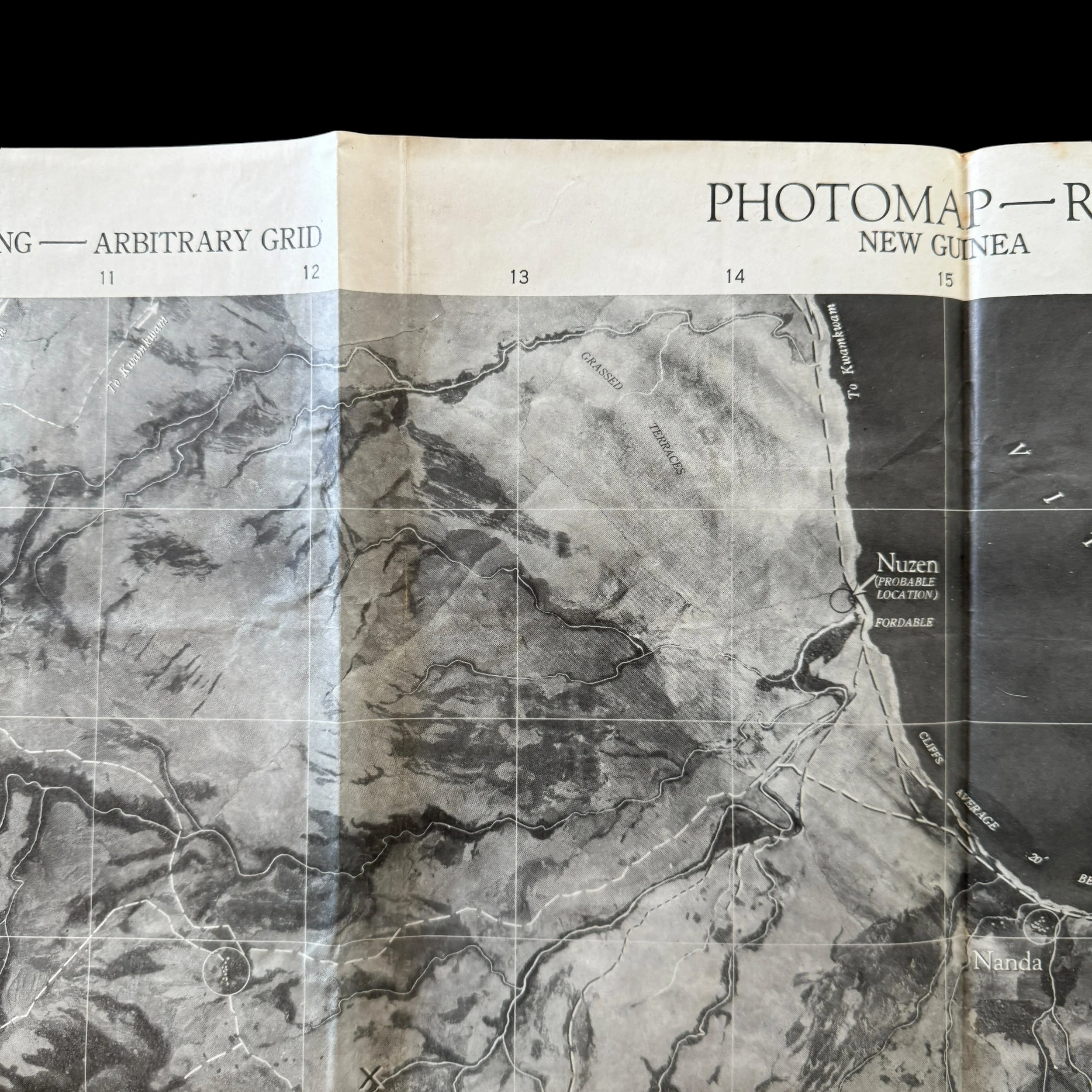
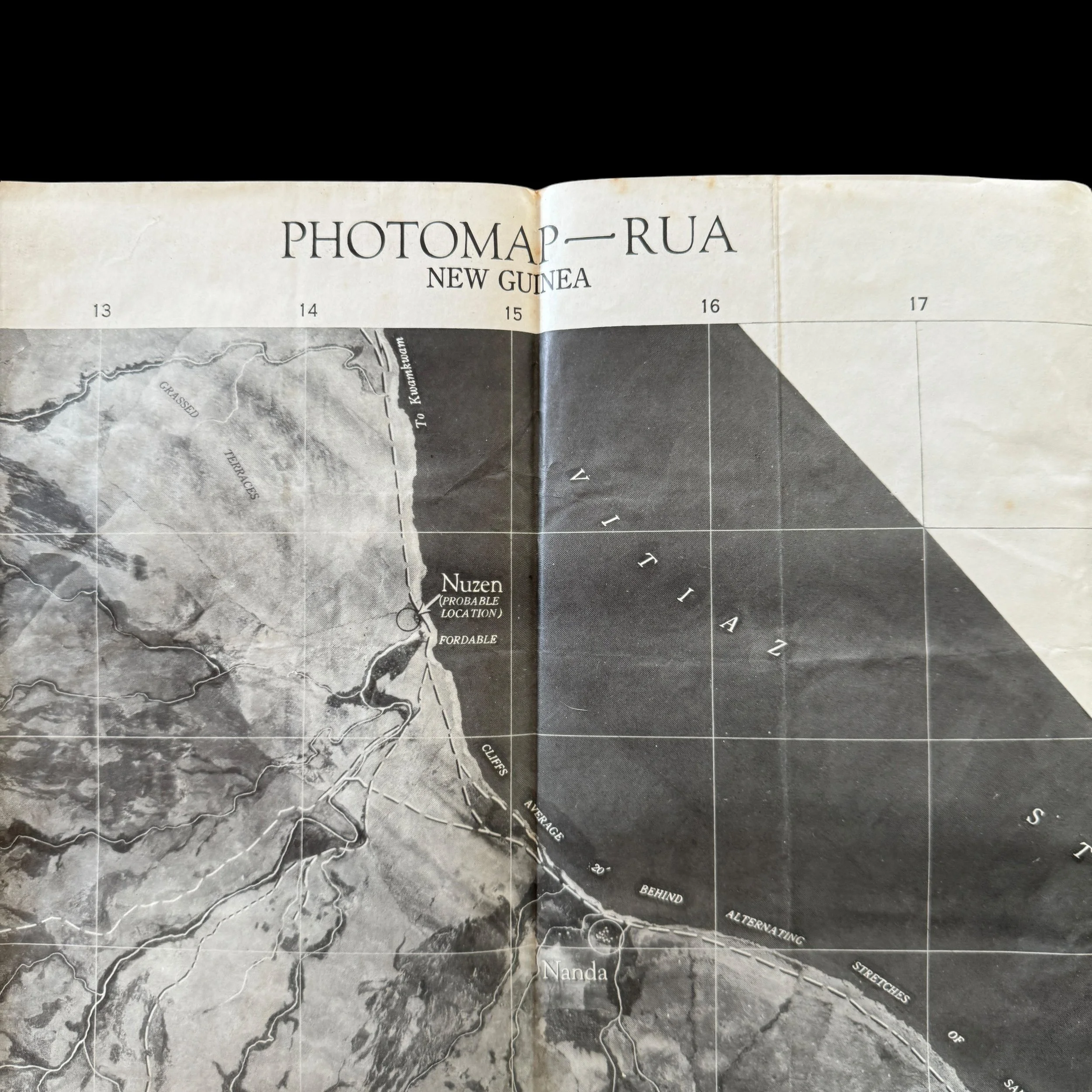

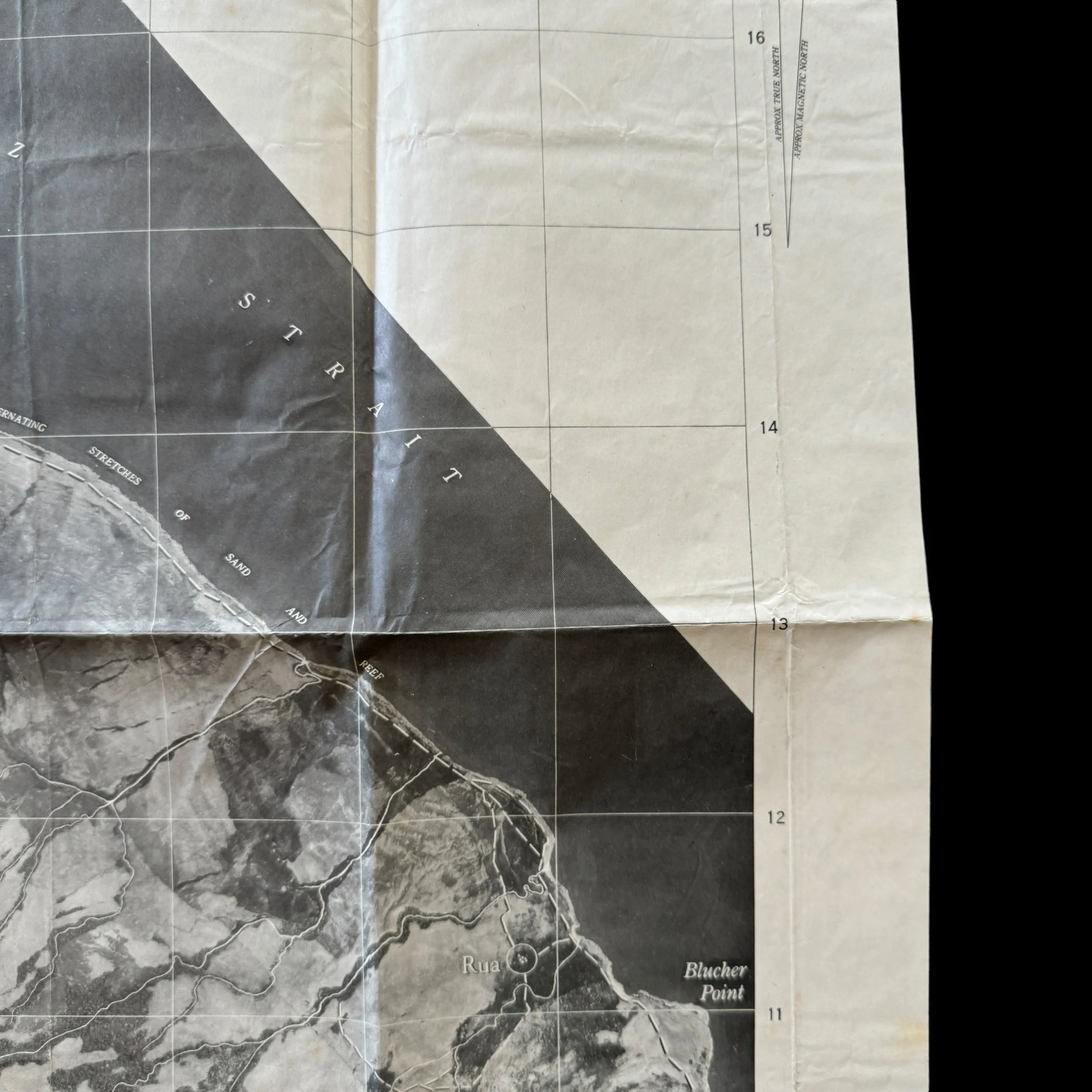


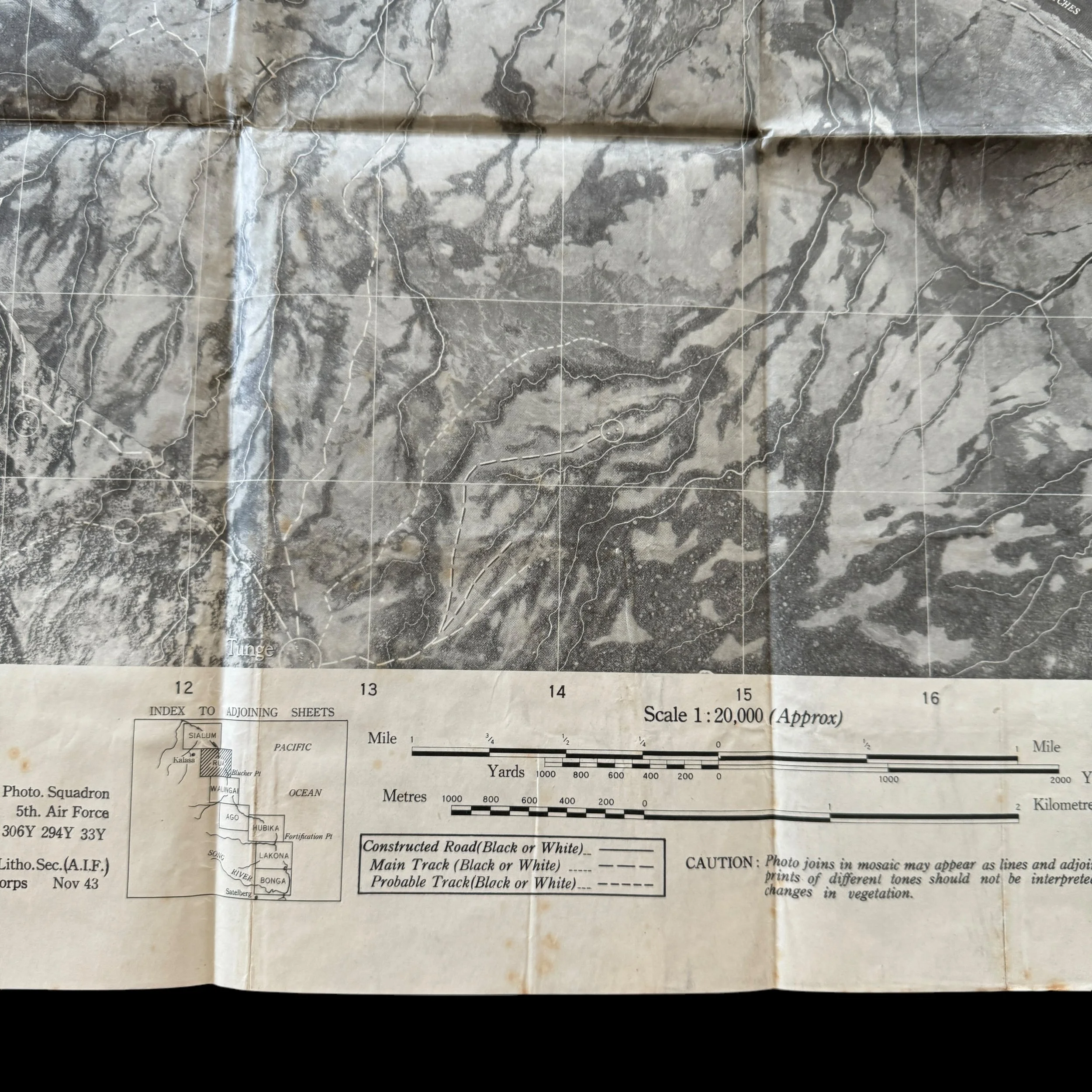
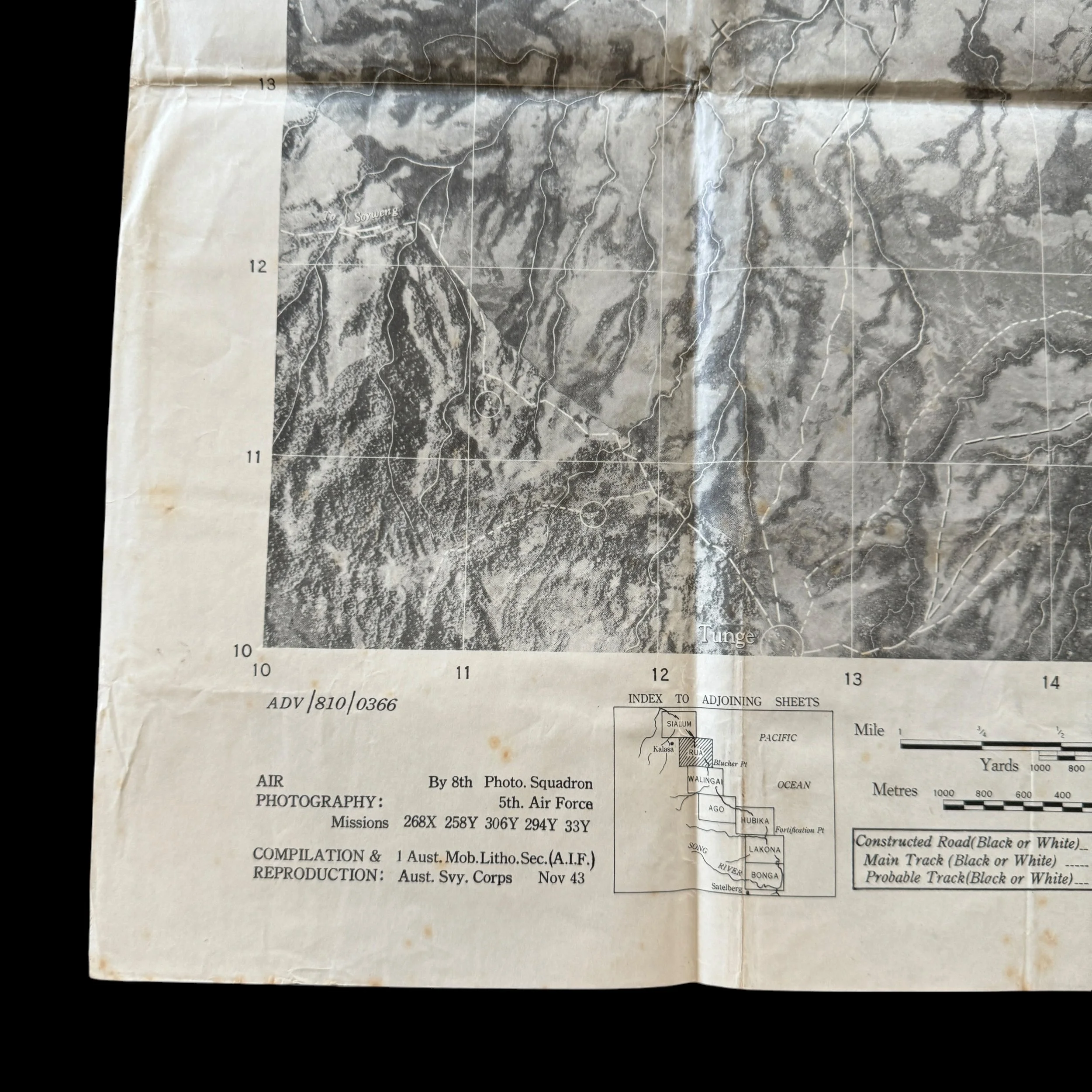

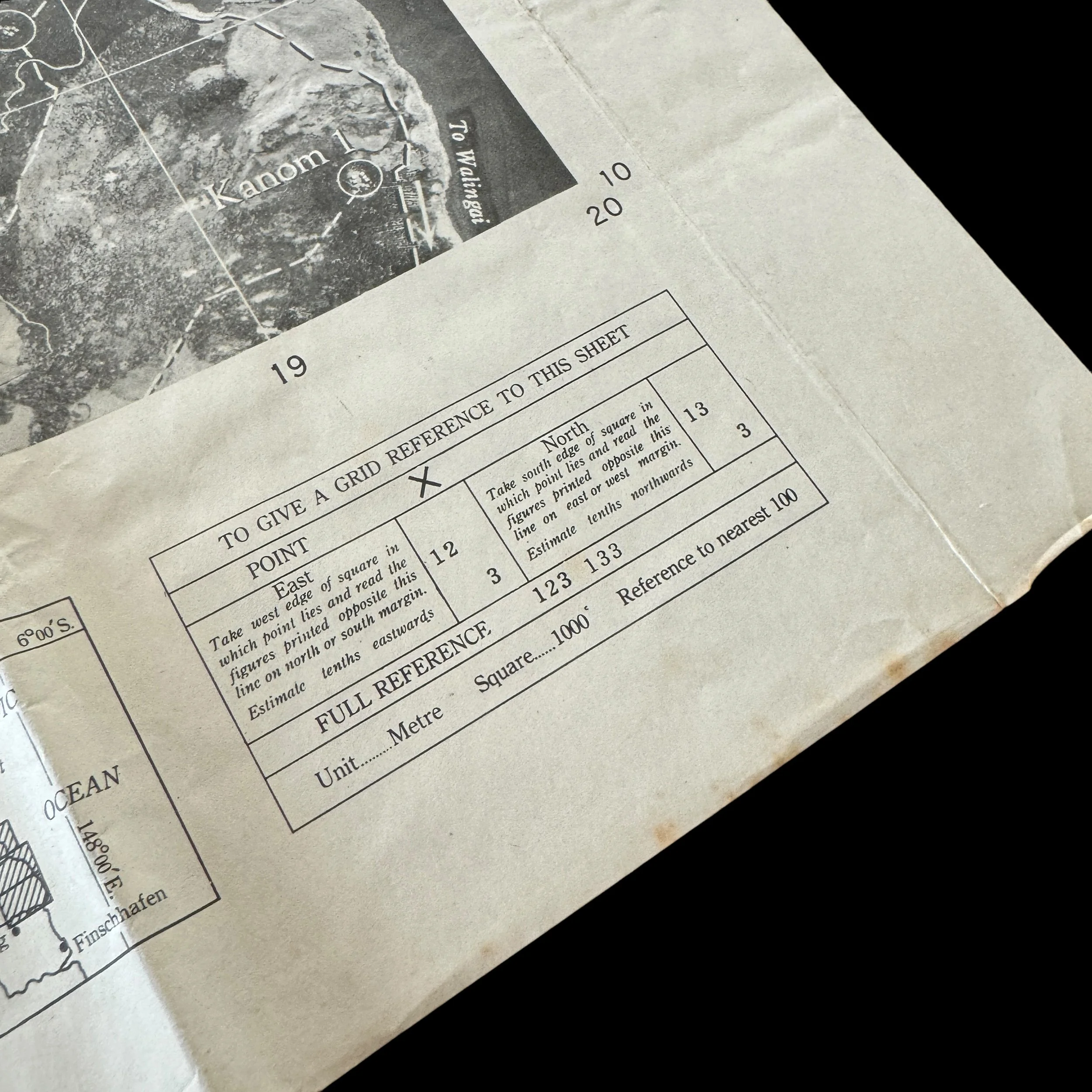
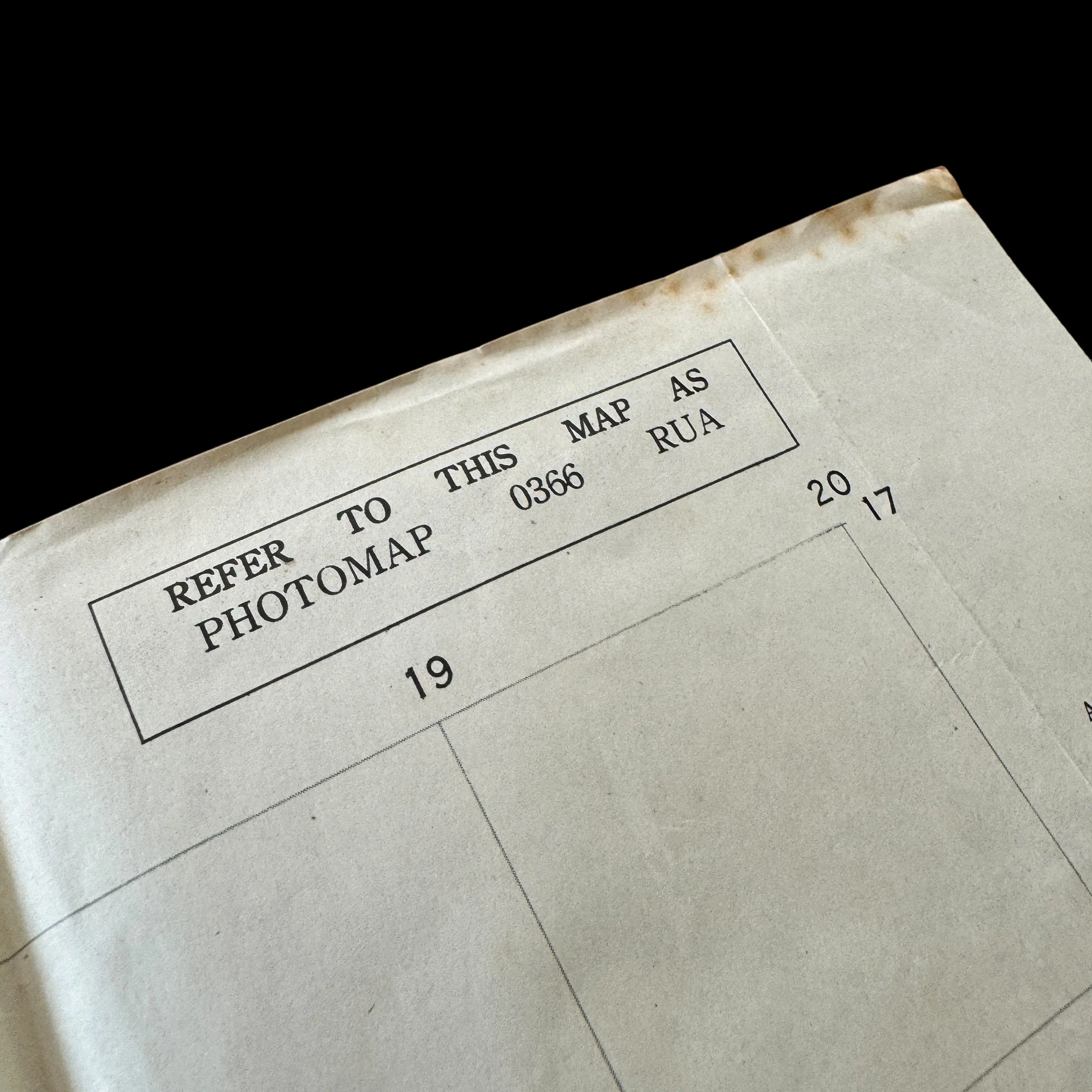
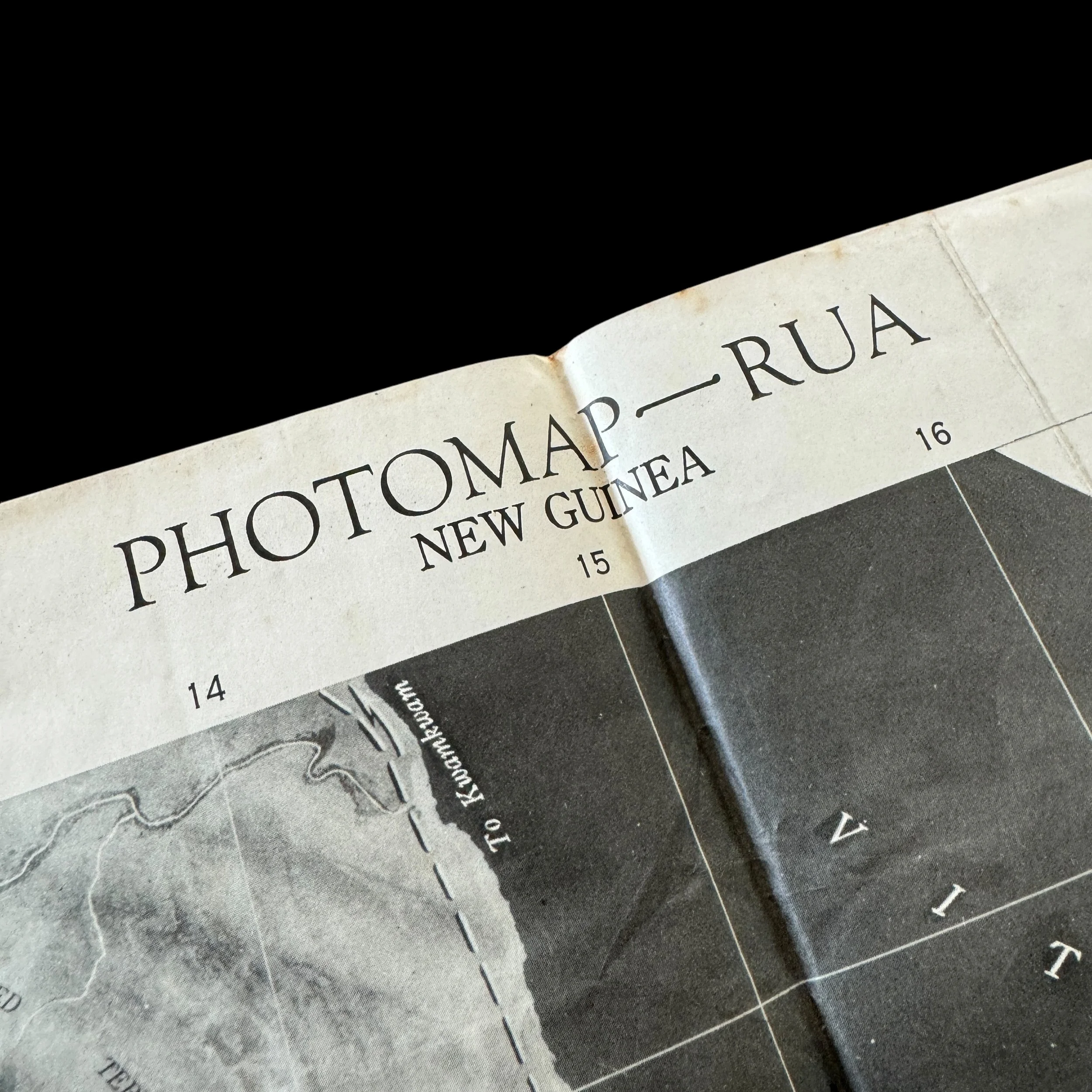


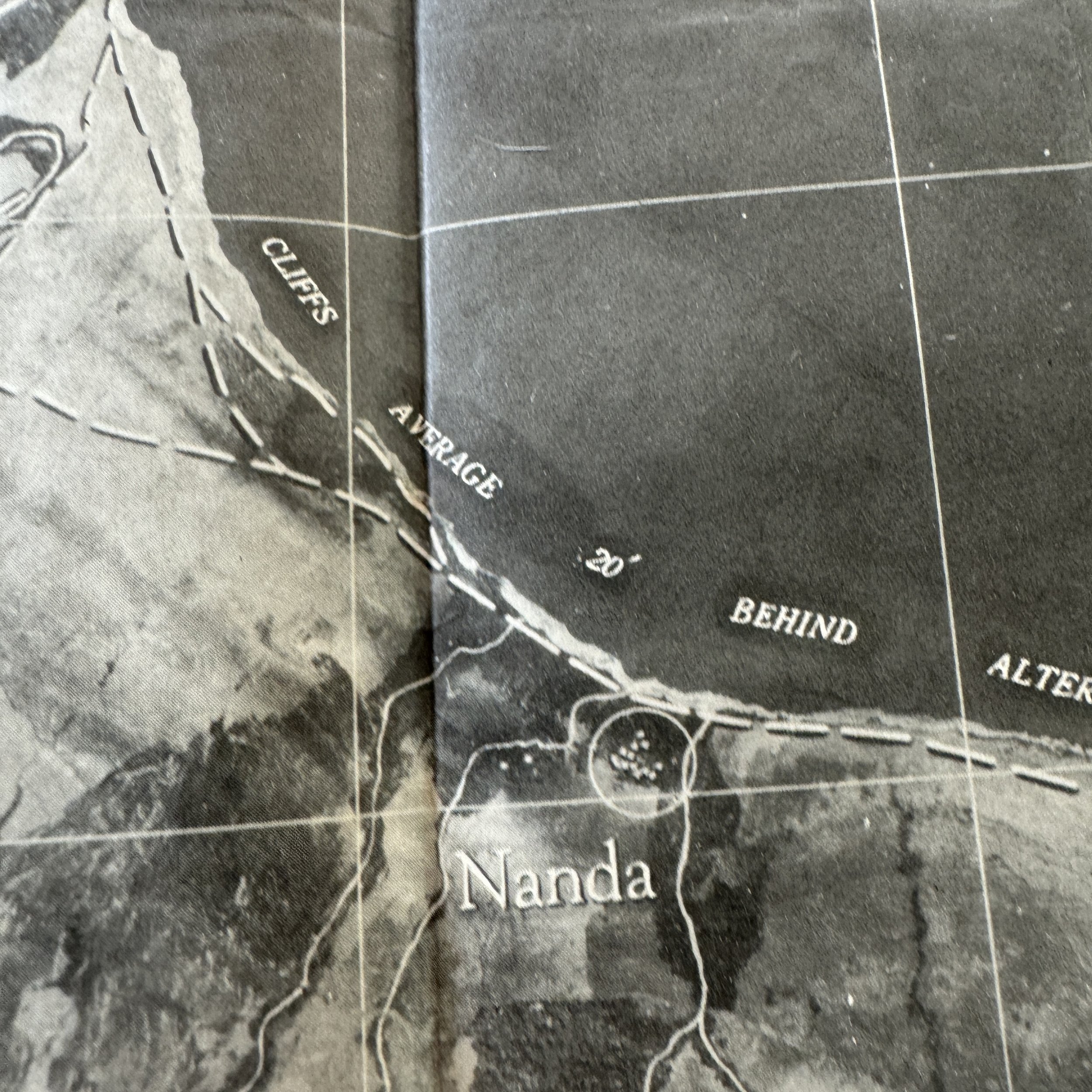
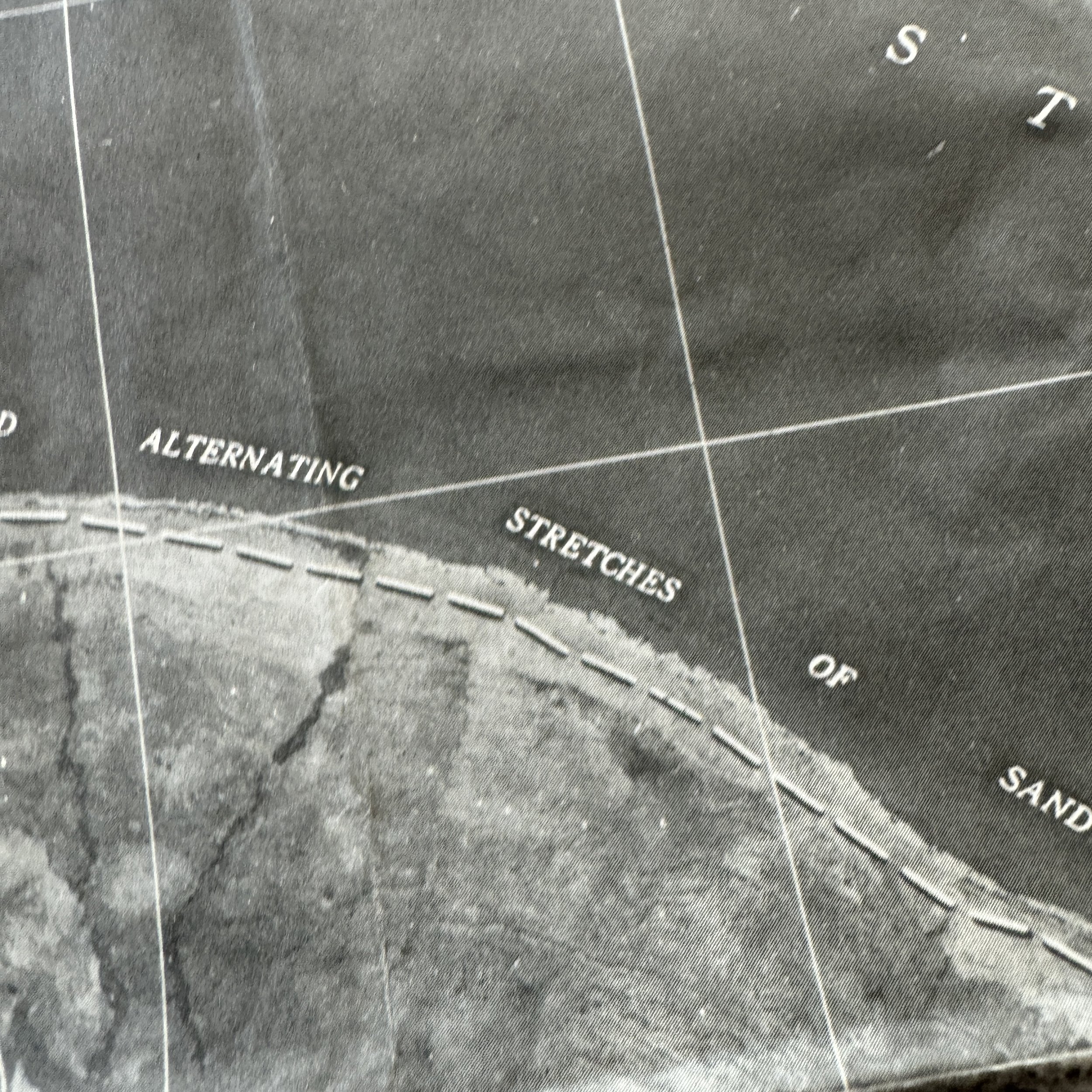
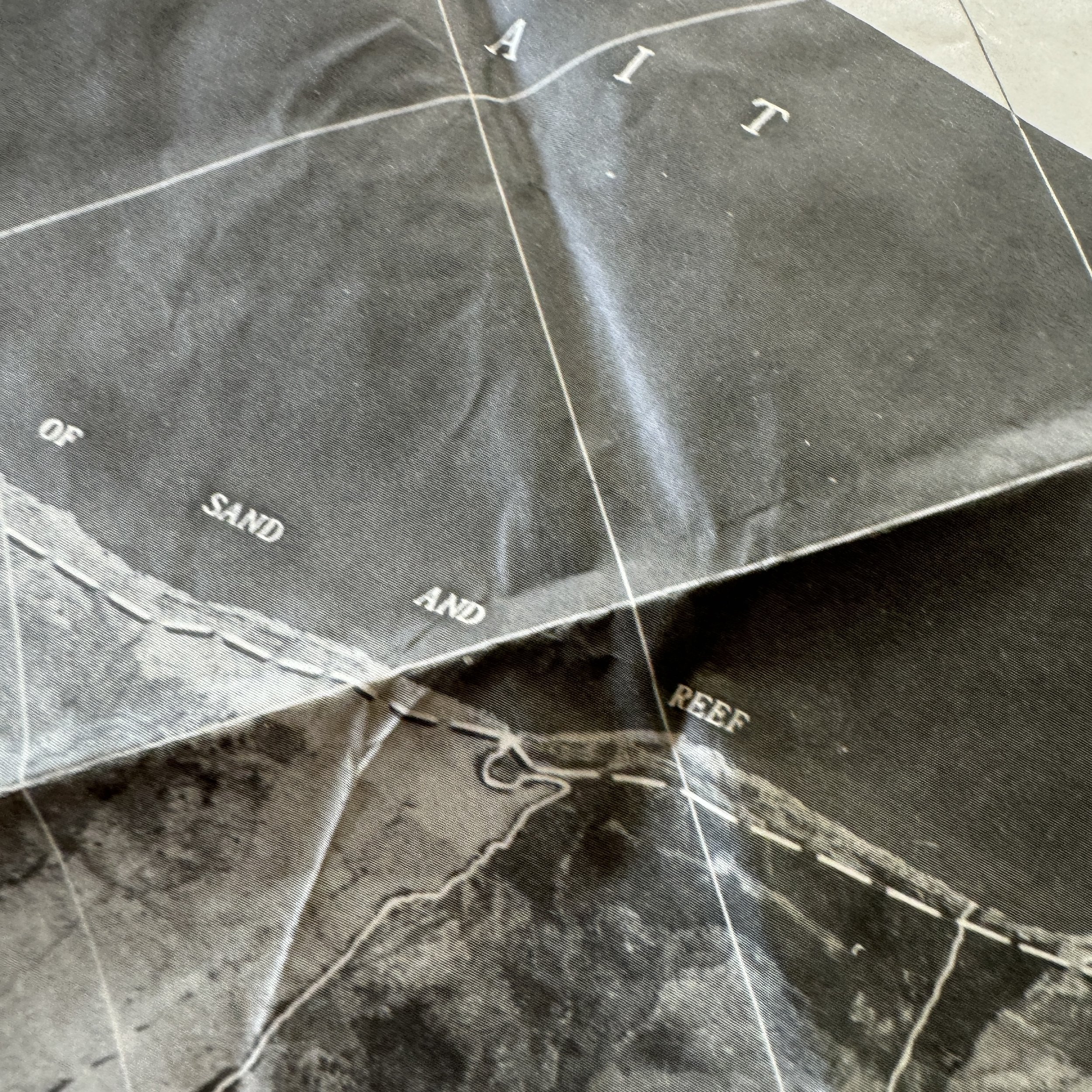
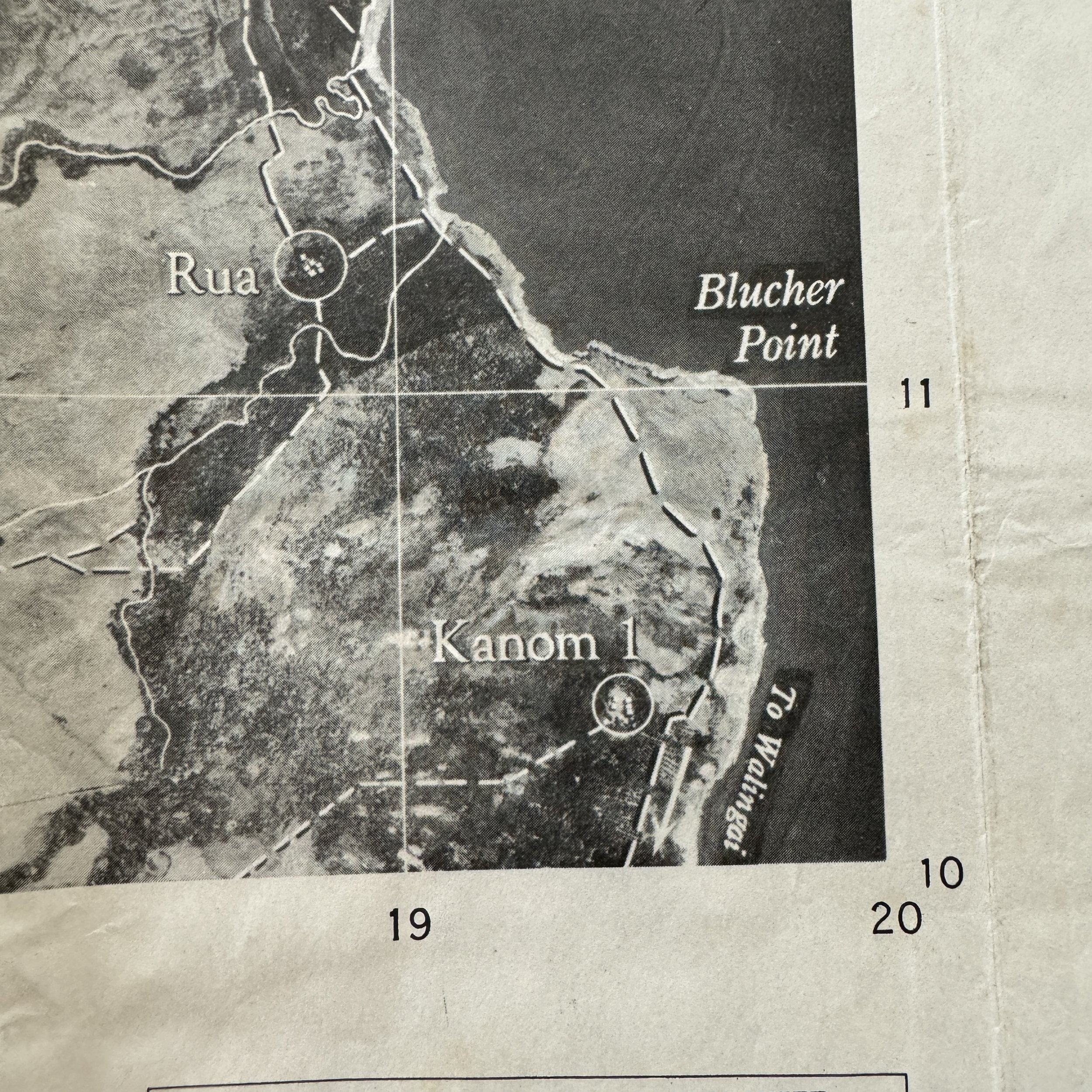
RARE! WWII 1943 New Guinea Campaign 8th Photo Reconnaissance Squadron (5th Air Force) Heavily Used Nuzen, Nanda, Blucher Point, Kanom Combat Aerial Photo Map*
Comes with a hand-signed C.O.A.
*This New Guinea combat map is a part of a larger 8th Photo Recon Squadron bring-back collection of TYPE-ONE mission photographs (the same used to make these combat maps) as well as original Allied combat maps used during the New Guinea campaign.
Size: 18 × 23 inches
This extremely rare and museum-grade Pacific Theater WWII artifact is an original 1943 dated and heavily combat-used New Guinea photomap that was created using aerial photo reconnaissance mission photographs by the infamous 5th Air Force - 8th Photo Reconnaissance Squadron (Eight Ballers).
The 8th PRS, also known as the 8th Photo Reconnaissance Squadron, earned a renowned reputation for its exceptional service during campaigns across various regions including the East Indies, Japan, China, Papua, Guadalcanal, New Guinea, Northern Solomons, and Bismarck.
The 8th Photographic Reconnaissance Squadron (8th PRS) operated under the U.S. Army Air Force (USAAF), specifically part of the 5th Air Force and the 6th Photographic Reconnaissance Group (6th PRG). Referred to as the 8th Photographic Squadron, 8th Photo Recon Squadron, or 8th Photo Recon, the unit was initially outfitted with the F-4 Lightning, a specialized photographic reconnaissance variant of the P-38 Lightning. Camera equipment was installed in the nose section in lieu of traditional armaments. Conducting missions above Japanese-held territories and airfields, the squadron captured vital imagery utilized in the creation of aerial maps and target intelligence for subsequent combat operations. These reconnaissance flights were inherently perilous, with pilots often flying solitary missions through adverse weather conditions and challenging navigation circumstances. While over target areas, pilots maintained a steady flight path at lower altitudes to ensure high-quality photographic results, braving risks such as anti-aircraft artillery and potential interception by enemy planes. In later operations, F-4s received protective escort by armed P-38 Lightnings to enhance their defensive capabilities.
________________
Rua, New Guinea
The area of Rua in New Guinea was significant not only for its geographical positioning but also for the intense military engagements that took place there. Positioned near vital supply routes, Rua became a focal point in the early stages of the Allied offensive. Allied forces needed to secure Rua to ensure safe passage for supply lines moving inland from coastal points, as these supplies were essential for supporting troops in deeper operations within New Guinea. Japanese forces entrenched themselves around Rua, creating a network of fortifications that made the area exceptionally difficult to capture. The dense jungles around Rua concealed Japanese bunkers and machine gun nests, forcing Allied forces to rely heavily on reconnaissance and close-quarters combat to advance.
The battle for Rua showcased the tenacity of Allied forces, as Australian and American soldiers pushed through the dense undergrowth under constant fire. Rua was eventually secured after weeks of grueling combat, and its capture allowed Allied forces to establish more reliable supply routes, a key step in expanding their reach across New Guinea.
Nuzen and Nanda: Key Points in Defensive Lines
Nuzen and Nanda, two critical sites within New Guinea, became strategic points in both Japanese defensive tactics and Allied offensive strategies. The Japanese, realizing the importance of maintaining a defensive perimeter, heavily fortified these locations to act as barriers to prevent further Allied encroachment. Nuzen’s elevation and natural fortifications made it an advantageous position for Japanese forces, who used it as a stronghold to launch counterattacks and ambushes on advancing Allied troops. The area around Nuzen also provided logistical benefits, as it connected several trails and river paths that were essential for moving supplies and reinforcements.
Similarly, Nanda was fortified with well-constructed bunkers and foxholes, making it a formidable challenge for the Allies. The combined strength of Nuzen and Nanda created a formidable defensive line that temporarily stalled Allied advances. The capture of these areas required meticulous planning and often heavy artillery bombardment to weaken Japanese positions. After weeks of intense fighting, the Allied forces secured both Nuzen and Nanda, allowing them to push deeper into Japanese-held territory and inch closer to victory in New Guinea.
Blucher Point and Kanom: Coastal Strongholds and the Path to Victory
Blucher Point and Kanom were critical coastal positions in New Guinea, with both areas serving as Japanese supply and command hubs due to their proximity to the sea. Blucher Point, with its strategic views of surrounding waters, allowed Japanese forces to monitor Allied naval movements and protect supply lines coming in from nearby occupied islands. The Japanese military presence at Blucher Point included anti-aircraft guns and coastal artillery, making it a challenging target for the Allied forces attempting to launch amphibious assaults. Capturing Blucher Point was vital, as it disrupted Japanese supply chains and weakened their coastal defenses, reducing the effectiveness of their resistance on the island.
Kanom, meanwhile, held importance as a logistical base supporting Japanese forces operating in New Guinea’s interior. Allied intelligence identified Kanom as a major resupply point, which made it a prime target in the campaign to dismantle the Japanese military presence on New Guinea. Using a combination of air raids and ground assaults, Allied forces were able to neutralize Japanese defenses at Kanom, cutting off a significant portion of their resources. The fall of Kanom marked a turning point in the New Guinea Campaign, as it limited Japan’s ability to sustain its forces, allowing the Allies to drive the Japanese back further into the interior of the island.
________________
During World War II, combat photomaps were a vital tool for planning and executing military operations, particularly in challenging terrains like those found in the South Pacific, including New Guinea. Photomaps were created using aerial reconnaissance photographs combined with traditional cartographic techniques, providing highly accurate and detailed visual maps of terrain, structures, vegetation, and potential enemy positions. These maps were especially important in areas like New Guinea, where dense jungles, rugged mountains, and poorly charted territories made traditional navigation and planning extremely difficult.
The Strategic Importance of Photomaps in New Guinea
New Guinea was a key battleground in the Pacific Theater, as both Allied and Japanese forces sought control over the region due to its strategic proximity to Australia and critical supply routes. The dense jungle terrain and steep mountains made conventional maps inadequate, so photomaps became indispensable. These maps gave Allied forces a strategic advantage, as they could accurately pinpoint natural obstacles, river crossings, potential landing zones, and enemy fortifications—information that was crucial for planning ambushes, supply drops, and coordinated assaults.
In New Guinea, Allied forces needed to identify and navigate through uncharted jungle terrain, plan airstrikes, and locate Japanese supply lines and bases hidden in natural cover. Photomaps allowed military leaders to accurately identify these critical areas, providing vital intelligence for tactical planning. Allied forces used photomaps extensively in key operations, such as the capture of the Kokoda Track, the Buna-Gona campaign, and the Battle of Wau, where knowledge of terrain often determined the outcome of engagements.
The Creation and Use of Photomaps
Photomaps were produced by taking multiple high-resolution aerial photographs, often from reconnaissance planes flying at high altitudes. These photographs would then be stitched together to create a detailed composite of the area. The accuracy of photomaps depended heavily on the quality of the photographs and the skill of the cartographers who aligned them. In New Guinea, challenging weather conditions, such as tropical storms, heavy cloud cover, and mountainous terrain, complicated aerial photography, making photomap creation a demanding task that required patience and precision.
Once photomaps were created, they were distributed to field commanders, pilots, and ground troops. These maps allowed soldiers to plan their approach routes, identify enemy defenses, and navigate difficult terrain without the need for detailed topographic maps, which often weren’t available or were outdated. For example, in the Battle of Buna-Gona, photomaps enabled Allied forces to pinpoint Japanese bunkers, hidden artillery positions, and supply trails that would have been invisible in standard maps or field reports. This level of detail was critical in planning precise airstrikes and ground movements, which were essential in securing victory in such a complex environment.
Impact on Air and Ground Operations
Photomaps were especially useful in coordinating air and ground operations. The Royal Australian Air Force (RAAF) and the United States Army Air Forces (USAAF) used photomaps to identify bombing targets, enemy fortifications, and supply depots. Bombers could plan their approach routes and targeting patterns based on detailed topography provided by photomaps, reducing the risk of collateral damage and improving the success rate of airstrikes. During the Battle of Wau, for instance, photomaps allowed Allied pilots to navigate through dense cloud cover and steep mountain ranges to deliver much-needed supplies and reinforcements to Allied forces engaged in battle.
For ground forces, photomaps were invaluable in planning amphibious landings and troop movements across challenging terrain. Troops could avoid natural barriers such as swamps, cliffs, and rivers, and identify more accessible routes through dense jungle areas. This knowledge allowed for more efficient movement and positioning of forces, helping troops to maintain the element of surprise in their engagements with Japanese forces.
In amphibious operations, such as those around Lae and Salamaua, photomaps helped commanders choose landing sites that offered cover and proximity to key objectives. The maps provided enough detail to allow for effective coordination between infantry, artillery, and air support units, maximizing the efficiency of Allied assaults on Japanese-held positions.
Legacy and Influence
The use of photomaps in New Guinea marked a turning point in military cartography, establishing photoreconnaissance as a critical component of modern warfare. These maps set a new standard for military intelligence and planning, showcasing the potential of aerial reconnaissance to provide real-time data and highly accurate visual information. The success of photomap-based operations in New Guinea helped influence the development of satellite imagery and geospatial intelligence systems used in modern military and civilian applications.